|

"The Young Ladies Book: A Manual of Elegant Recreations, Exercises, and Pursuits"
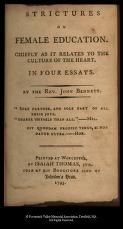
"Strictures on Female Education"

Springfield bicycle club displaying their trophies
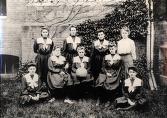
Girls Basketball team, Deerfield Academy
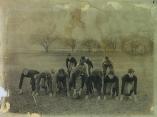
Football players
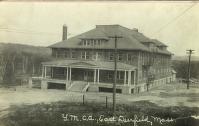
Y.M.C.A., East Deerfield, Mass.

"Annual Report of the Town Officers of Deerfield For the Year Ending Dec. 31, 1926-
Annual Report of the School Committee"
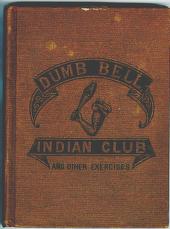
"Manual of Instruction in the Use of Dumb Bells and Indian Clubs & Other Exercises"
|
Summary and Objective
Students will understand that expectations of exercise, and the forms it took, varied widely for men and for women during the years 1780 to 1980. This lesson will trace the progression of wellness initiatives (exercise, fitness, and athletics) and emphasize the historical significance of Title IX as it pertains to athletics.
Teaching Plan
Step 1.
1Students will receive a copy of the document titled “The Young Ladies: A Manual of Elegant Recreations, Exercise and Pursuits,” and review it in detail.
Students will brainstorm, while teacher promotes discussion concerning the following question:
What do you think would be contained within the document titled “The Young Ladies: A Manual of Elegant Recreations, Exercises and Pursuits”?
Students will continue to brainstorm considering the following questions:
What do you think would be contained in a similar document created for men around 1830?
What exercises do you think women were involved in during this time period?
What exercises do you think men were involved in during this time period?
Was the purpose for exercise different for men and women, if so why?
Students and the teacher will create a list that explores the different purposes for exercise for men and women at during this time period.
Step 2.
"The Young Ladies: A Manual of Elegant Recreations, Exercises and Pursuits,”(title page, pages 409, 413, 417) will be used as a model in order to promote small group discussions. The teacher will then distribute copies of primary source photos and documents attached to this activity to the students, who will be organized into small groups. Each group will observe one copy of a photo and or read the attached text for the following primary documents: "Strictures on Female Education""(title page, pages 6-13), Manual of Instruction in the Use of Dumb Bells and Indian Clubs & Other Exercises" (Cover, Title page, 4, 6-11, 43-47) Springfield bicycle club displaying their trophies,
Girls Basketball team, Deerfield Academy, Football players, Y.M.C.A., East Deerfield, Mass, "Annual Report of the Town Officers of Deerfield For the Year Ending Dec. 31, 1926- Annual Report of the School Committee"(pages 106,107, 112-114). Students will be reminded to consult the list created in Step 1 as they look at designated sections contained within each item and observe documents in greater detail. They will also use the following guiding questions. Can you find examples of gender bias or traditional gender roles within these documents? Are any of the activities common to both men and women?
After reviewing the primary source documents, students will exchange ideas as they compare and contrast and draw conclusions about male and female wellness initiatives from the information provided.
Step 3.
Small groups will then report their findings and opinions to the whole class. Findings will be written on the board in order to organize the material students have learned from the photos and documents.
Step 4.
As a large group activity the entire class will put the primary documents into chronological order creating a two-sided time line of wellness initiatives for men and women overtime. One side will be for men and the other side will be for women. (this is visual evidence that the progress was not at all even on both sides) Teacher will then ask, what is the significance of this time line?
Step 5.
Students and the teacher will create a Venn Diagram on the board that highlights current athletic endeavors that are dominated primarily by men, women or both.
Step 6.
As a follow up lesson the teacher will initiate a whole class discussion concerning what students know about the law referred to as Title IX.
Step 7.
An additional follow up lesson would be for students to access the Title IX website www.titleIX.info/ to read about the law itself, so as to understand how it pertains to athletics. Students will respond verbally to the following discussion questions:
1. Does Title IX only apply to athletics?
2. Should the “Living Law,” only apply when federal funding is available?
3. How is Title IX similar to the American’s with Disabilities Act?
4. Why has the number of women, coaching women’s teams decreased since 1972?
5. Are you satisfied with the general perception that there are equal opportunities in all areas of athletics? Why? or Why not?
|




